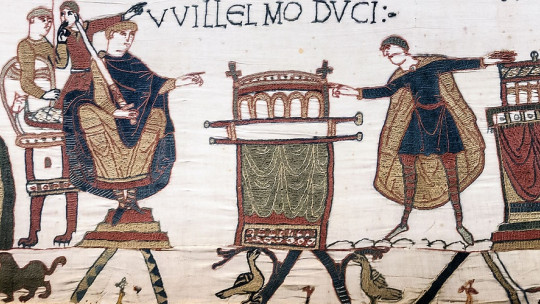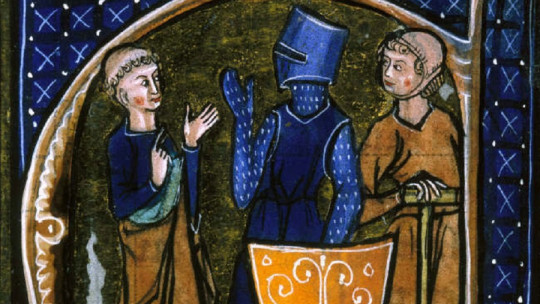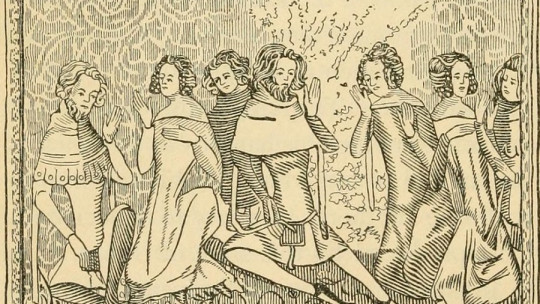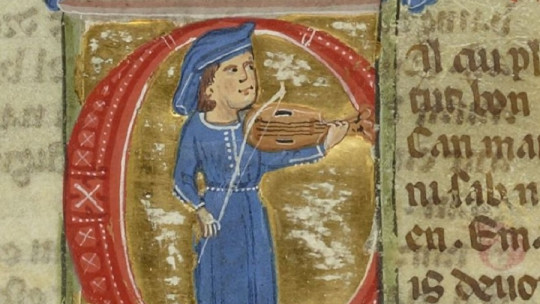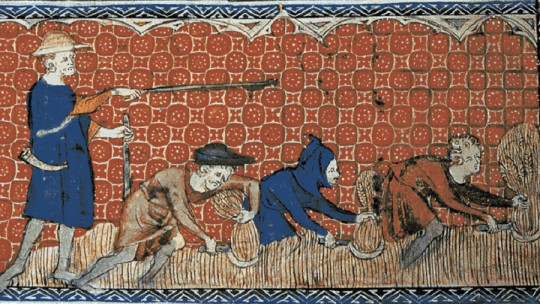The Middle Ages was a dark time but, at the same time, very complex in terms of relationships between social classes. Nobles and clergy established relationships of loyalty among themselves, in which some acted as feudal lords and others as vassals, forming complex pyramids of vassalage
Let’s take a closer look at what this type of social organization was, how one could become a vassal of a feudal lord and how the system ended up collapsing.
The pyramid of vassalage
The majority system of organization in the Middle Ages was feudalism, in force especially notably between the 9th and 15th centuries in the western part of Europe.
Feudalism was based on relations of vassalage, which They involved several people paying allegiance to feudal lords and, in turn, these feudal lords paying allegiance to nobles with higher titles like kings or emperors.
In this way, medieval society was made up of vassal relations, which made up what has been called the pyramid of vassalage.
What exactly was a vassal?
The figure of the medieval vassal was that of a person who was obliged to pay a fief, and offer services to his feudal lord.
This vassal was a subject of a nobleman or a member of the clergy who was, governmentally speaking, above him. The nobleman or ecclesiastic was the owner of land but it allowed other lower-ranking nobles to exploit the territory, administer it and inhabit it, as long as they met various demands on the part of the feudal lord.
How did one become a vassal?
At the beginning of the Middle Ages, being a vassal was a condition that was acquired. The personal pact that was established between feudal lords and their vassals It was made effective through a ceremony: the investiture It was on this occasion when the vassalage contract was made, it was consecrated and the relationship of loyalty began to take effect.
Although there were regional differences and the ceremony was not always the same, the typical image of this type of celebration was that whoever became a vassal placed his hands on those of the lord and declared himself “his man”, swearing fidelity to him and paying homage to him. . The alliance was sealed by kissing the feudal lord and, subsequently, that lord symbolized the cession of part of his territory by offering him a handful of land.
It should be said that vassalage, which was voluntary at the beginning, It gradually became a mandatory relationship That is, as the feudal lords became more powerful, with greater military influence and with more capacity to declare the wars they wanted, any noble who did not have the proper protection of a feudal lord risked being a military target. of nobles eager to expand their territories.
Obligations of the vassal
The vassal had a series of obligations to fulfill towards his feudal lord, obligations stipulated in the form of clauses and conditions during the celebration of the investiture. If they were not respected, the vassal relationship could be broken
Among the main ones was that of offering military aid in case the feudal lord required it: shielding. In fact, the etymological origin of the word “vassal” literally indicates what its most important function was, given that This word is cognate from the Celtic root “wasso”, which literally means “young squire”
The noble vassal had to make the necessary soldiers and mercenaries available to his lord in order to protect the feudal properties, bearing the costs of the feat.
Furthermore, the vassal had to put at the disposal of his feudal lord all the military forces commensurate with the amount of land and possessions. That is, if a vassal was rich and powerful, he had to send the proportional part to the level of wealth he had obtained It should be said that with the passage of time some noble vassals became so rich that they refused to send their soldiers to their lord’s wars, compensating him with the equivalent payment in cash.
Another of the vassal’s obligations was to give “consilium” to his lord, that is, to advise him economically, politically and legally. Along with this, the vassal had to be present in those situations that his lord required, situations that could be of all kinds and conditions, such as, for example, making a pilgrimage to the Holy Land, accompanying him on a trip, taking charge of his castle in your absence…
However, it should be noted that the vassal relationship was not unilateral, since The feudal lord had to respect and meet the needs of his vassal Among them were military protection, maintenance, judicial defense as well as allowing him to exploit the lands that he had given him, as long as he paid a tribute for it.
Differences between vassalage and servitude
It is very important to understand the difference between vassals, who were nobles and members of the clergy, and serfs, who were usually extremely poor peasants, members of what in the Enlightenment would be known as the Third Estate. Although vassalage and servitude were social relations typical of feudalism, they differed in terms of the rights of both parties.
In vassalage, both parties are usually part of privileged classes , in addition to signing a bilateral contract between equals. Both were free citizens with broad recognized rights. On the other hand, in serfdom a feudal lord allows peasants to live on his land, but these peasants must work the land in inhumane conditions. They are not free citizens, they are attached to the land where they live, they cannot leave it, and they are not even remotely equal to the feudal lord.
The few differences between servitude and slavery are that in servitude there are some recognized rights, such as being able to marry whoever you want or the right to life. The feudal lord gives them shelter and protection, but they must participate in his exploits as soldiers.
Structure of the pyramid of vassalage
During the Middle Ages, as vassal relations were formed between the different levels of the society of the time, the increasingly complex structure of the pyramid of vassalage was formed. Roughly speaking, The structure of this pyramid had the following links :
At the top, as long as there was no emperor above him, was the figure of the king who, technically, was the owner of all the lands in his kingdom. In this way, all the nobles who lived in them were below him, offering him loyalty, tribute and soldiers when necessary.
It should be said that The figure of the medieval king is not that of an absolutist king as the European kings of the Enlightenment could have been The medieval king, despite being the sovereign of his kingdom, did not have absolute control over his lands. Although his noble vassals were obliged to comply with the clauses stipulated during the homage ceremony, in turn, the rights they had over part of the king’s lands meant that the monarch had increasingly limited power.
The rest of the links in the vassalage pyramid were made up of people who were both vassals and feudal lords of other vassals. That is, the same person could be subject to the power of a higher-ranking noble but, at the same time, have vassals, who were nobles of a lower rank than their own.
The lowest part of society was represented by the common people, especially peasants , who could work for a lord’s land as serfs. They were not technically vassals, but rather medieval versions of what is meant by slaves.
The end of vassals and vassalage
The pyramid of vassalage began to collapse from the very top, when Charlemagne’s empire faced internal disputes from his heirs in the 9th century. Although the Middle Ages had only recently begun, this was already an indicator of how fragile the structure can be if one of the links disappears, in this case that of the emperor.
At the same time, these heirs of Charlemagne began to lose power, ceding rights to their vassals. Thus, and related to what we were discussing before, the kings had limited power due to the existence of the high nobility and, in turn, the high nobility ceded rights to the classes below them. The nobles began to lose the power to separate fiefs from vassals going from titles that were obtained through a ceremony to titles obtained hereditarily, without those above them being able to freely decide whether to eliminate it or not.
The dissolution of the bond that vassals had with their lords was legally legitimized when a few centuries passed, when the kings were formally recognized as emperors of their kingdoms. The kings were vassals of the pontiff, but not of the emperors , something that, although it had not been completely fulfilled, was an aspect taken for granted in the first centuries of the Middle Ages. The same thing happened with some members of the nobility, creating states that, despite not being governed by kings, their independence was recognized.
The pyramid of vassalage officially collapsed with the arrival of the Late Middle Ages, when vassal relations were almost completely dissolved, although the existence of noble titles was respected. The crisis occurred in the 14th century, manifesting itself in the form of a very clear separation between the high and low nobility Furthermore, the figure of the king gained a lot of power, heading towards the absolutist monarchies so characteristic of the Modern Age.

